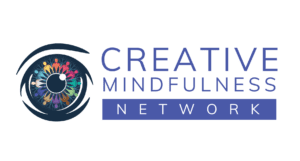As an EMDR educator, people are constantly asking me what I think of the latest trend in EMDR therapy. In the last year or so, Phillip Manfield’s Flash Technique has become all the rage. My students will tell you that I am not easily impressed by the latest spin on the standard protocol or twists on time-honored strategies for resourcing and regulating affect. I’ve long maintained that if you learn the standard protocol well and have a sense of how to mindfully modify with respect to special populations, dissociation, complex trauma, and the art of embodied resourcing, you have what you need. To be clear, I do not oppose use of the Flash Technique if it makes sense to the therapist using it and the technique helps the client. I also want to make my assessment clear that the Flash Technique, like many other trends that have captivated the attention of EMDR practitioners, is not a panacea or a quick fix. Indeed, it can prepare more complex clients for full reprocessing. Yet Flash is not the fullness of complete reprocessing and it is not a substitute for EMDR Phases 3-6. Indeed, there are many other strategies, especially from the tradition of embodied mindfulness, which can also engender more active preparation for reprocessing. Explaining my assessment of flash in this larger context led me and several colleagues on the Institute for Creative Mindfulness faculty to coin the term EMDR Phase 2.5.
This phobia of both affect and mindfulness develops as a legitimate response to unhealed trauma and dissociation (Forner, 2019), especially if a person was imprinted with negative cognitions such as: “I cannot show my emotions,” “It’s not safe to show my emotions,” “Showing emotions makes me weak,” among others (Marich, 2011; Marich & Dansiger, 2018). I’ve long taught trainees that even though their tendency may be to get nervous when a preparation skill like Calm Safe Place or container doesn’t seem to work, the client is still getting something valuable out of the exercise if you handle it well. These traditional preparation skills, if you follow the textbook, are supposed to bring about pleasant and resource-worthy experiences. Yet if they “go bad,” you now have an opportunity to guide a client through an experience in distress tolerance. For me, teaching a client that they can sit with unpleasant experiences for a time and/or use other resources to shift the focus is the best possible preparation skill that we can give clients in advance of moving into the reprocessing Phases (3-6) where discomfort will happen. For me, this is the essence of EMDR therapy Phase 2.5.
Our program and my approach to EMDR therapy is known for its focus on mindfulness. While Dr. Shapiro herself was a practitioner of mind-body healing modalities and studied with renowned west coast meditation teacher Stephen Levine, many EMDR therapists are not sufficiently grounded in the fundamentals of mindfulness and embodiment. Having these fundamentals is just as important, if not more important, than knowing an advanced preparation technique like Flash. Especially because Flash is not full-proof; many students and consultants have reported to us that it can “go bad” or open up into full reprocessing before a client is ready. As my colleague Dr. Stephen Dansiger and I explain in our 2018 book EMDR Therapy and Mindfulness for Trauma-Focused Care, the standard EMDR protocol is filled with invitations to mindful awareness. Use of questions like what are you noticing now? (Phase 4), when you scan your body from head-to-toe, what are you noticing? (Phase 6) and prompts like Go with that give us all the evidence we need that Shapiro developed EMDR therapy in a mindfulness context. Often defined as the practice of coming back to non-judgmental awareness, many have posited that mindfulness is one of the potential mechanisms of action in EMDR’s success (Logie, 2014; Shapiro, 2018). Yet if the first time a client is asked to be mindful or embodied is during their first run through the protocol, it may be too late.
As Christine Forner (2019) explains in her brilliant new article on connections between dissociation and mindfulness, dissociation is essentially a state of missing mindfulness. Mindfulness is about connection and dissociation is about surviving disconnection. Thus, many individuals who have spent their entire lives dissociating are literally phobic of mindfulness, and in the standard EMDR protocol we are asking them to be both mindful and embodied. This request is not necessarily a bad thing because learning to be mindful and processing mindfully is a major component of what can help us heal. As EMDR practitioners, we must do a better job of preparing clients for what the standard protocol expects.
Mindful and embodied EMDR therapy preparation requires more than just reading a script out of a book on mindfulness or showing a client a video. While I make several video resources in this area available online, I urge that EMDR practitioners must have a personal grounding in mindful and embodied practices to help clients deal with difficulties when the scripts don’t flow as planned for the client. Complex trauma and dissociation is messy and while we can do our best to give you a step list of what to follow for teaching these skills, drawing from your own personal experiences will help you to respond in the moment and guide clients through distress tolerance as safely as possible. In the Institute for Creative Mindfulness curriculum, we teach trainees to offer skills in all of these areas as part of Phase 2 preparation:
- Basic awareness, mindfulness, and grounding strategies
- Breathing strategies
- Muscle tensing and releasing strategies
- Visualization and multi-sensory soothing
- Movement strategies
- Identification of other recovery capital (e.g., support resources, self/mutual help groups, spiritual resources, advocacy, pets)
While we are not alone as a training program in teaching this widened scope, we see active exploration of these resources and the problems that they can bring up for the client as real opportunities to work with distress tolerance and engage in EMDR Phase 2.5. If a skill “goes bad,” we work with it to help a person notice the affect it creates or return to the present moment from any shut down that it caused. If a client protests, “I can’t do it,” we ask them how we might be able to modify a skill, which can include shortening the length of time that we spend in a skill.
A particularly strong skill from the mindfulness tradition that, in my view, should be taught by every EMDR therapist as part of EMDR Phase 2.5 is Mindfulness of Feeling Tone. Mindfulness of Feeling Tone is the second of four primary foundations of mindfulness. In this meditation, we ask the client to bring up their present-moment experience, scan the body briefly, and ask them if what they are noticing is pleasant, unpleasant, or neutral. Too often we have to orient clients to the language of what are you noticing now and if you’re doing it once they are activated in Phases 3-4, it’s too late. Many of our clients lack the vocabulary and practice with feeling or sensation to begin to even answer this question. This exercise is an elementary yet vital start to the process for it gives them three words to start with that are similar to the EMDR therapy constructs of adaptive, maladaptive, and neutral. You can take Mindfulness of Feeling Tone a step further by deliberately asking a client to bring up some association they would describe as pleasant and then guide them through noticing how they experience pleasant in the body. Do the same thing for unpleasant, which will be more challenging, yet ultimately more preparatory for what is to come in later Phases of EMDR Therapy. They don’t have to sit with the unpleasant experience forever; thirty seconds may suffice. Then you can move on to neutral and if needed, shift back to pleasant, strengthening that adaptive resource with DAS/BLS if appropriate. To watch a video demonstration of me guiding this exercise, please click HERE.
A resource such as Mindfulness of Feeling Tone is similar to the processes of titration and pendulation that Peter Levine actively calls upon in his creation, Somatic Experiencing®. I’ve trained many individuals well-schooled in both Somatic Experiencing and Sensorimotor Psychotherapy® and indeed one of the biggest criticisms they have of EMDR therapy is that we can blast a client in too quickly to the heart of the trauma without easing them into it using processes like titration and pendulation. Titration calls for a slowing down and only working on small pieces of a trauma at a time and then retreating into resources. While this process may go against what many EMDR therapists believe, stringently following Shapiro’s (2018) teaching that “preparation is not processing,” (p.36) I argue that for some complex clients titration is warranted. To me, this is where the Flash Technique is filling a gap in enhanced EMDR therapy preparation. For many years I have addressed this gap, if it appears with a client, by asking them what part of a target memory are they willing to work on first, even if it’s not necessarily the image or worst part. If needed, in the spirit of titration, we retreat into resources and then go back into this gentle test of processing. Sometimes the process of going with what we set up leads us to the worst part, other times it does not and we have to go back and set up the target again to address the worst image or worst part. My modification is another example of an EMDR Phase 2.5 that can lead into full Phase 3-4 that may be appropriate for complex clients. Yet in and of itself, the modification would be incomplete for optimal resolution of the memory.
The Flash Technique also seems to be helpful in the process of pendulation. Levine describes pendulation as the shifting of body sensations or emotions between those of expansion and those of contraction (Levine, 1997; Payne, Levine, &Crane-Godreau, 2015). A key principle of pendulation as practiced in Somatic Experiencing® is that a resilient nervous system is one that can move back and forth between alertness/action and calm/rest without getting caught in the extremes. Pendulation invites a fluctuation between resourced states and activated states as a mechanism for training our nervous system, which can help with long-term integration.
The Flash Technique, as described in this wonderful review by Ricky Greenwald (2017) (click HERE for the link), resonates for me as a practice of pendulation. This makes the Flash Technique a more robust form of EMDR preparation and thus meets my classification of it as EMDR Phase 2.5. I have long felt that EMDR therapists have much we can learn and integrate from Somatic Experiencing® and Sensorimotor Psychotherapy® and I believe that Manfield has given us a way to bring in some of these ideas, especially through the visual channel.
However, Flash Technique is not the only way to prepare our clients more effectively for the intense affect and embodied shifts that will inevitably happen once EMDR Phases 3-6 commence. Some of the mindfulness and embodiment skills that I covered in this article are a mere overview of what EMDR therapists can learn to more effectively prepare clients. I’ve long admired that the flexibility of EMDR therapy Phase 2 allows practitioners to bring in other modalities or approaches that they feel can strengthen the skills a client acquires in preparation. On my team, in addition to traditional mindfulness work, my faculty members and I make use of yoga, dialectical behavior therapy, expressive arts therapy, 12-step strategies, well-established work like Seeking Safety®, and creative interventions offered to us by other leaders in the EMDR therapy community like Jim Knipe and Ana Gomez.
All of these strategies are available to you and to your clients! Learning them and implementing may not feel as simple as reading a script or following a simple set of steps. I know that many EMDR therapists want these steps spelled out and this is natural for adult learners. However, it seems that every few years I talk to therapists who get caught up in the latest trend without learning the context that surrounds it and this is problematic. Even more problematic is if practitioners believe that the latest thing will replace their need to do other, more comprehensive resourcing. There are no short cuts in EMDR therapy; it takes hard work and personal commitment to become fluent and responsive. Committing to the expansion of your skill set using some of the other strategies we described here and your own personal practice with many of these skills means that you will excel at working in EMDR Phase 2.5!
Please, let’s make this an active blog. Share in your comments if this “2.5” concept resonates with you and what you have done to foster this level of preparation other than using the Flash Technique. I look forward to hearing from you.
Special thanks to Institute for Creative Mindfulness team members Amber Stiles-Bodnar, Dr. Stephen Dansiger, Suzanne Rutti, Adam O’Brien, Ramona Skriiko and several others for their contributions to this piece.
References
Forner, C. (2019). What mindfulness can learn from dissociation and dissociation can learn from mindfulness. Journal of Trauma & Dissociation, 20(1), 1-15.
Greenwald, R. (2017). Flash! Trauma therapy just got easier and faster. Trauma Institute & Child Trauma Institute Blog. 28 November 2017, available at www.childtrauma.com/blog/flash/
Korn, D., & Leeds, A. (2002). Preliminary evidence of efficacy for EMDR resource development and installation in the stabilization phase of treatment of complex post traumatic stress disorder. Journal of Clinical Psychology, 58, 1465–1487.
Levine, P. (1997). Waking the tiger: Healing trauma. Berkeley, CA: North Atlantic Books.
Logie, R. (2014). EMDR- more than just a therapy for PTSD? The Psychologist- The British Psychologist Society, 27 (512-517).
Marich, J. (2011). EMDR made simple: Four approaches to using EMDR with every client. PESI Publishing (Premiere): Eau Claire, WI.
Marich, J. & Dansiger, S. (2018). EMDR therapy & mindfulness for trauma-focused care. New York: Springer Publishing Company.
Parnell, L. (2008). Tapping in: A step-by-step guide to activating your healing resources through bilateral stimulation. Boulder, CO: Sounds True Books.
Payne, P., Levine, P., & Crane-Godreau, M. (2015). Somatic experiencing: Using interoception and proprioception as core elements of trauma therapy. Frontiers in Psychology, 4 February 2015, DOI: https://doi.org/10.3389/fpsyg.2015.00093
Shapiro, F. (2018). Eye Movement Desensitization and Reprocessing: Basic principles, protocols, and procedures, 3rd ed.New York: The Guilford Press.















4 Responses
Hi Jamie,
First, thank you so much for offering your EMDR phase 2.5 training! I found it immensely helpful as newly trained EMDR practitioner. I am currently learning techniques like pendulation and other somatic-based interventions with my consultant, and the way you presented this material has been a game-changer for me. I’ve recognized that slowing down to enhance the client’s narrow window of tolerance (with more complex presentation) and support them with accessing their own embodiment through an extended preparation phase particularly helps build the client’s confidence in the process. It is also helping to build my confidence as an EMDR therapist with knowing when to shift in to phases 3-8 with my clients. Thank you for normalizing that slowing down is useful! I didn’t get that message enough in my part 2 Basic Training and I knew I needed to be doing more than just waiting to use Cognitive Interweaves during phase 4.
This offering is exactly what I needed! Thank for sharing what you’ve learned, and validating the experiences I’ve had as well! I especially appreciate the wisdom that the best way to learn how to work with clients and their parts, is by doing our own part work. I look forward to benefitting from more of your trainings and so many of the resources you’ve made available!
Wow news for all us